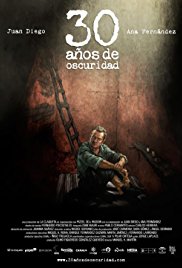Initial release: March 14, 2017
Director: Agustí Villaronga
Based on Joan Sales Catalan language novel of the same name from September 1956.
There are those movies that are about a place, time, and/or an event. Then there are those movies that can be set in any place, time, and/or during an event. I think Uncertain Glory does an excellent job of walking the line with a foot in each-a beautiful film set in 1937 in the Aragon Theater. The move is in Catalan not Spanish! I have a soft spot for the Catalans and Aragonese as my mother’s family is Sicilian and her maiden name is Italianized Spanish and my DNA says I am over 3% Iberian.
I digress; the move is set in a small village where when the film opens the first scenes are the execution of the local minor nobility by radical left-wingers. Fast forward to 1937 when a Republican officer Lluís and his best friend Soleràs whom are from Barcelona are stationed to man the lines that run by the village.
Lluís meets the “widow” of the executed nobleman and falls for her, but not her for him.
Lluís, his wife, and Soleràs are all urban anarchists and Lluís, and his wife isn’t actually married. I assume anarchists don’t marry in general?
So now we get to the meat of the matter- Lluís doesn’t know if he is in love with his wife, but we do learn that Soleràs is. This creates tension as Lluís’ commanding officer invites the officer’s wives for Christmas. This sets Soleràs of the deep end and he defects to some Nationalist Moroccan soldiers. Soleràs is the friend you have that is a little off kilter-free spirit that you love but at the same time dislike. Here he is in Barcelona with some fantastic propaganda posters.
I am not going to give you a spoiler this time, but the widow manipulates Lluís’ in doing something terrible in order to safe his son. At the close of the movie we see that there begins shelling and shooting in what had been a very chill place.
I really thought this was a well done film-beautiful, engaging, and an excellent look at “petty” politics in small villages, and the lengths that people will go for self-preservation, and the complexities of love and friendships. I loved the uniforms but when we saw Nationalist troops there uniforms looked so much like the Republicans except they wore a steel helmet. Here is Soleràs after he defected.
Postal history- Lluís in one scene sits at a desk trying to write a letter to his wife but he isn’t able to. On his desk is a stack of letters with postage (can’t see what the frankings are). In another scene Soleràs burns letters where you can see clearly that one envelope has a 2 cts a Catalan Ajut All Mutilats de Guerra Conselleria de Treble and a Republican 10 cent regular issue.


























































